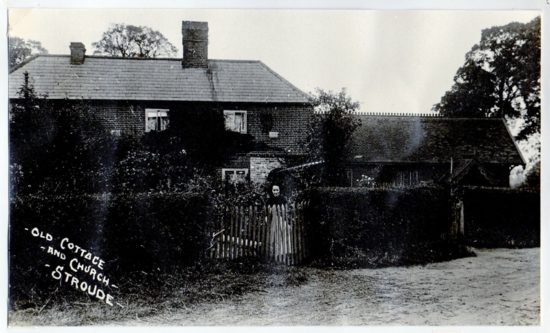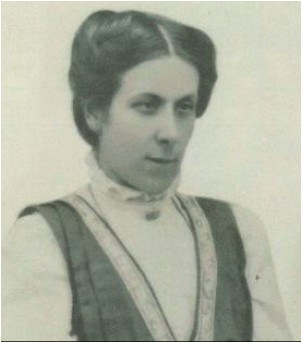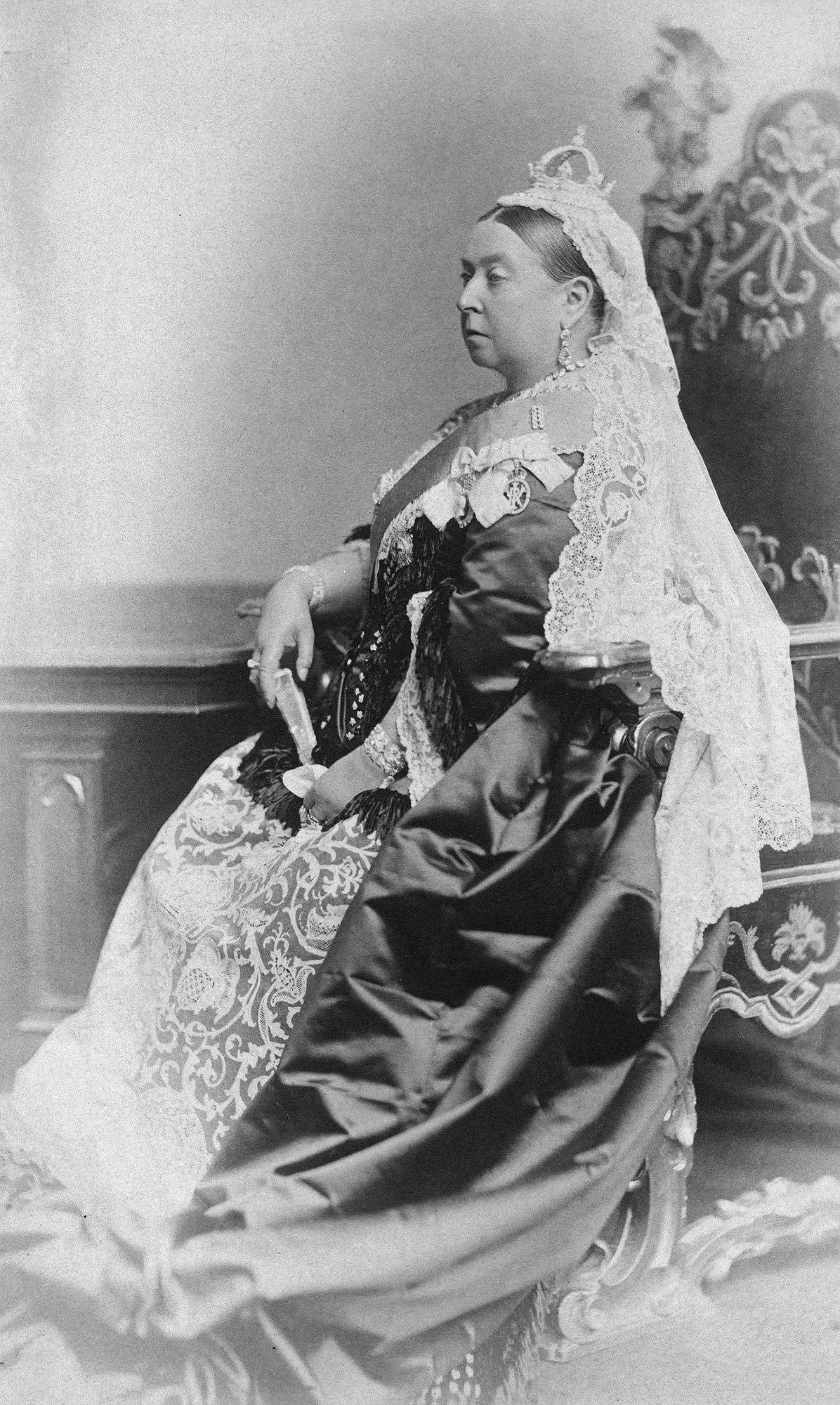The Women who Influenced Schooling in the Egham Area
During her research investigating the history of education in the Egham area over the past few centuries, Museum volunteer Margaret Stewart notes how it has highlighted the significant part played by a number of redoubtable women.
The earliest recorded was Mrs Mary Barker who in 1704 left land with the instruction that its income of £5 a year should be used to employ a ‘sober, pious and able’ Protestant schoolmaster or schoolmistress to teach the poor children of Englefield Green to read the Bible in English and girls to sew, make plain work and to knit. This bequest is commemorated on a plaque still displayed at St Jude’s School.

In the early years of the nineteenth century, Catherine Irvine of Luddington House, the wealthy widow of Walter Irvine who had made his fortune as a planter in Tobago and her daughter Christina, were very concerned about the lack of educational opportunity for local poor children. They established a school in the Church Room at Stroude in 1826 (with their neighbour Edgell Wyatt Edgell of Milton Park) which took up to 90 children and in 1841 Christina founded another for 46 children in St Anne’s Heath on land belonging to Corpus Christi College. These lasted until 1893 and 1844 respectively, catering for both girls and boys. Not only concerned with education Christina also gave an endowment of £2,000 in 1837 for the establishment and maintenance of a church for the labouring poor on land donated by her mother – this was to become Christ Church, Virginia Water. The church fittings included two benches for schoolmistresses which led to a successful Sunday school, fuelling the argument in favour of establishing a day school. When Christ Church School was built, the Irvines featured frequently among the benefactors.
Christchurch School employed Annie Harriet Brant as Mistress from 1891. She had trained as a teacher at Whitelands College in Chelsea (the first college of higher education in the UK to admit women) and was qualified in “freehand, Geometry and perspective”. She immediately introduced Drawing as an examination subject for the boys and followed this with English, Elementary Science, Singing by Note and Geography.[i] The school went from strength to strength under her guidance and the school inspectors noted “The Mistress deserves great credit for the striking improvement she has effected in this school. The tone of it is pleasant and the discipline thoroughly satisfactory.” Perhaps even more significantly one of her pupils recorded “We were proud of our school, not without reason, for we had an excellent governess, and always won a goodly proportion of prizes and awards in various classes at the annual Egham Flower Show in competition with other bigger schools in the district….. Miss Banks had charge of the infants, and Miss Hubbard the intermediate classes up to Standard 3, after which Miss Brant taught every subject to the mixed assortment of ages, abilities, backgrounds, besides having responsibility for running the school, ordering supplies.” [ii] Miss Brant stayed at Christchurch until early in the First World War.

Sophie Weisse, who established NORTHLANDS SCHOOL in London Road in 1892, has been the subject of a previous article[iii]. After Northlands closed the building was taken over by Isobel Llewellyn Rhys and Gwendoline Rhys in 1922 to become St David’s School[iv], a private boarding school for girls aged 6-14. Isobel, Head of the Belvedere School in Liverpool since 1903, became Headmistress and Gwendoline acted as Housekeeper. Educated at Hereford High School and then at Somerville College, Oxford (where she was awarded her first certificate in 1889) and at Dublin and Liverpool Universities, Isobel Rhys was awarded a Gilchrist Travelling Studentship in 1902 by the Cambridge Training College to undertake a tour of Switzerland and Bavaria, studying their educational provision for girls . She subsequently published her findings [v] and in the introduction she wrote: “It is seldom that men discuss the question of the influence of all the new changes in our education system on the national character, on the English men and women of the future. This is more noticeable at present with regard to the education of girls than of boys in England. The Public Schools have evolved a definite type of manhood, but there is as yet no agreement as to the characteristics of the ideal Englishwoman, and therefore public opinion with regard to the education of girls is in a transitional state. We have not decided on the proportions in which the qualities of the old-fashioned and new-fashioned women are to be blended; hence there is great confusion in the minds of parents when choosing a school, great difficulty on the part of the schools in settling on the curriculum to be adopted. At such a time of unrest, it is not only interesting but helpful to see how other nations with very definite ideals carry them out.”
She attracted a talented team of female teachers who could prepare the girls to take the Common Entrance exam for admission to public school. In 1932 she served as the President of the recently formed Association of Head Mistresses of Preparatory Schools (set up in 1929). The Misses Rhys retired in 1935 to Shaws, Englefield Green where Isobel Rhys died in 1940. The school continued under the leadership of Celine Newstead Williams, formerly Head of Ipswich High School, whose sister Margaret was classics teacher at St David’s. The school took in evacuees during the Second World War and thereafter some girls also attended as day scholars. St David’s closed in approximately 1966 after the Crown lease ran out.

Queen Victoria supported several of the local schools with personal gifts, including £50 towards the establishment of Christ Church School (£50) and lime trees for the grounds of St Jude’s School. She donated the land in Station Road where the Egham Parish School was built in 1870
local children received only certificates!

Her daughter Princess Helena, who took the name Princess Christian after she married Prince Christian of Schleswig-Holstein, supported many local charities. In 1879 she established a holiday home for boys in Englefield Green so that disabled children could enjoy the countryside of Windsor Great Park. She was instrumental both in creating Bishopsgate Infants School in 1880 but also in trying to save it after its temporary closure in 1921. She also hosted free dinners for poor children and the unemployed at the Windsor Guildhall, presiding over two of them personally in February and March 1886. Over 3,000 free meals were served during the course of the winter.
Margaret C Stewart
[i] Davis, Dorothy (1982) Country School, a study of Christ Church School, the Virginia Water National School 1843-1900. Egham-by-Runnymede Historical Society.
[ii] Louisa Chapman, 1900-1988 http://www.simonpg.com/louisa.htm [Accessed 7 June 2018]
[iii] Stewart, Margaret (2018) Sophie Weisse And Her Favourite Pupil. http://eghammuseum.org/blog/2018/04/18/sophie-weisse-and-her-favourite-pupil/ [Accessed 7 June 2018]
[iv] Davis, Dorothy (1991) St David’s School for Girls. Connection, the Paris Magazine of Christchurch Virginia Water, June 1991 pp4-5.
[v] Rhys, Isobel L (1905) The Education of Girls in Switzerland and Bavaria https://www.amazon.co.uk/Education-Girls-Switzerland-Bavaria/dp/1341047636/ref=tmm_hrd_swatch_0?_encoding=UTF8&qid=1528453900&sr=1-1 [Accessed 8 June 2018]

